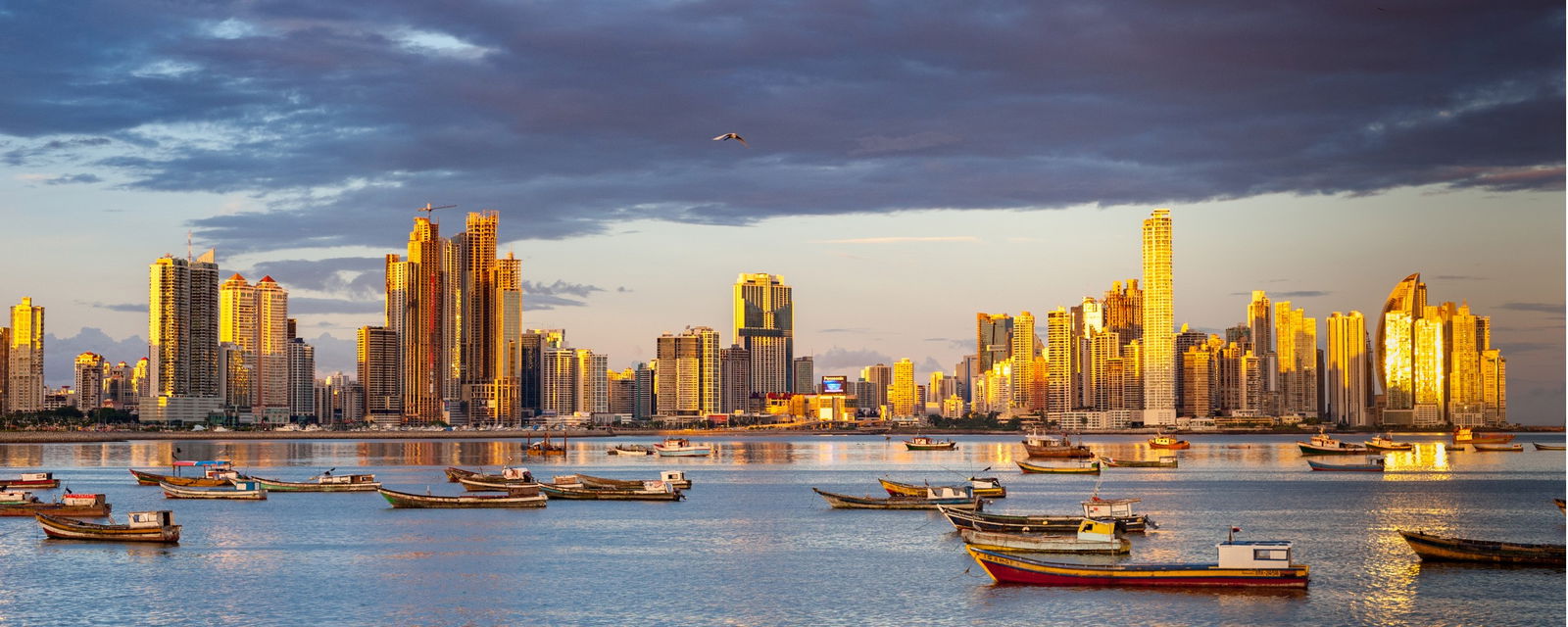


The capital, abutting the world-famous Panama Canal, this city is trendy, chic and ever so metropolitan. However, it also offers visitors a taste of the Panamanian past. Tour the historic cobblestone street center or stroll through Panama Viejo where ruins mark milestones of the city’s history. It is not all urban though. Situated next to the Pacific Ocean and ringed by rainforest, Panama City offers plenty by way of exhilarating outdoor experiences as well. You really can find the best of everything here!
Many do come to the city to check out the most famous canal in probably all the world. Connecting the Atlantic and the Pacific, the historic waterway is approximately 51 miles long. One of the biggest draws are the locks which lift ships from one location to another. The most visited lock: Miraflores.
A wildlife refuge within a major capital city, the park is home to numerous plant and animal species. Many find that a day hiking through the park’s trails results in some amazing wildlife finds. This is also a terrific place for panoramic views of the city.
The remains of “old Panama City,” Panama Viejo definitely has some stories to tell. It was declared a World Heritage Site in the late 90s and since then has drawn many tourists. You can see ruins of convents and a cathedral—not to mention this was featured on both The Amazing Race & Survivor.

Panama City's winter, from December to February, offers warm and pleasant weather with temperatures ranging from the mid-70s to low 80s Fahrenheit. It's an ideal time to visit the capital city of Panama as it allows for comfortable exploration of its historic sites and modern attractions. Winter is perfect for visiting the Panama Canal, one of the world's most significant engineering feats. Visitors can watch ships pass through the Miraflores Locks and learn about the canal's fascinating history at the visitor center.

Spring in Panama City, from March to May, brings slightly warmer temperatures with highs in the low to mid-80s Fahrenheit. The city's landscapes remain green and lush from the previous dry season. Spring is ideal for exploring Casco Viejo, the historic district of Panama City, known for its colonial architecture and charming streets. Visitors can wander through the cobblestone alleys, visit museums, and enjoy rooftop dining with panoramic views of the city.

Panama City's summer, from June to August, marks the beginning of the rainy season. While it can be hot and humid with temperatures in the mid-80s to low 90s Fahrenheit, it also provides a refreshing respite from the dry season. Summer offers opportunities for cultural experiences, as visitors can attend festivals like the International Jazz Festival and the Panama International Film Festival. Summer is also ideal for exploring Ancon Hill, a natural reserve within the city, offering hiking trails and stunning views of the city and the Panama Canal.

Fall in Panama City, from September to November, is the peak of the rainy season. The weather remains warm and humid, with temperatures ranging from the mid-70s to low 80s Fahrenheit. Despite the rains, fall is an excellent time to experience the city's vibrant culture and attend local events and concerts. Visitors can explore the Metropolitan Natural Park, a tropical rainforest within the city, and spot diverse wildlife, including sloths, toucans, and monkeys. Fall is also an ideal time to indulge in Panamanian cuisine and seafood at the city's many restaurants and markets.
